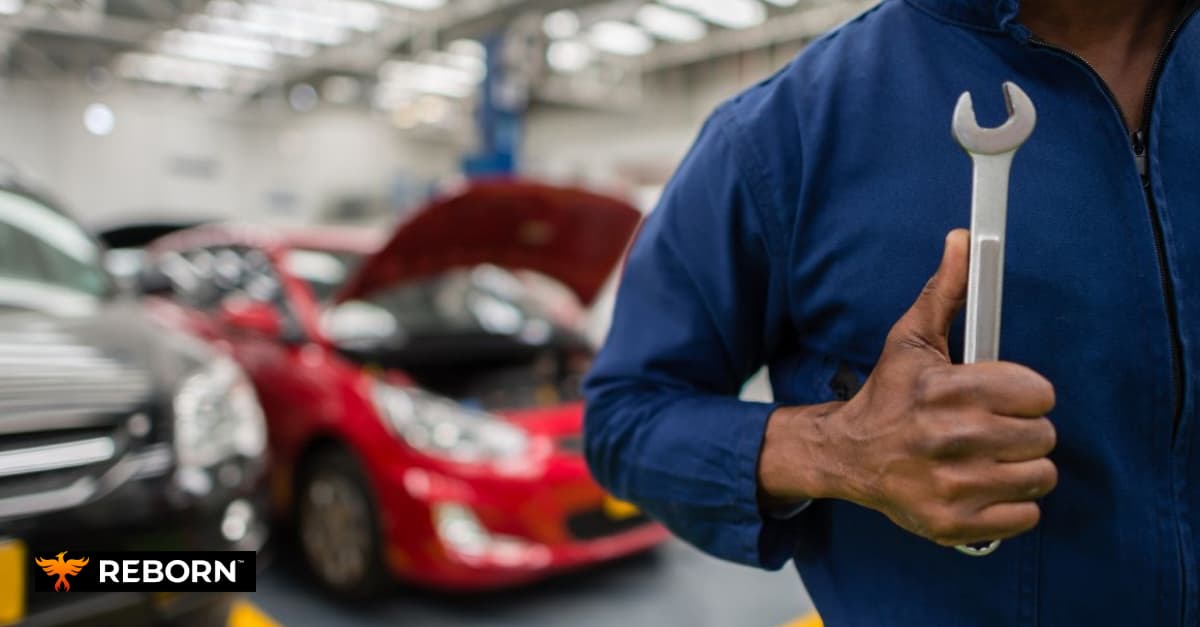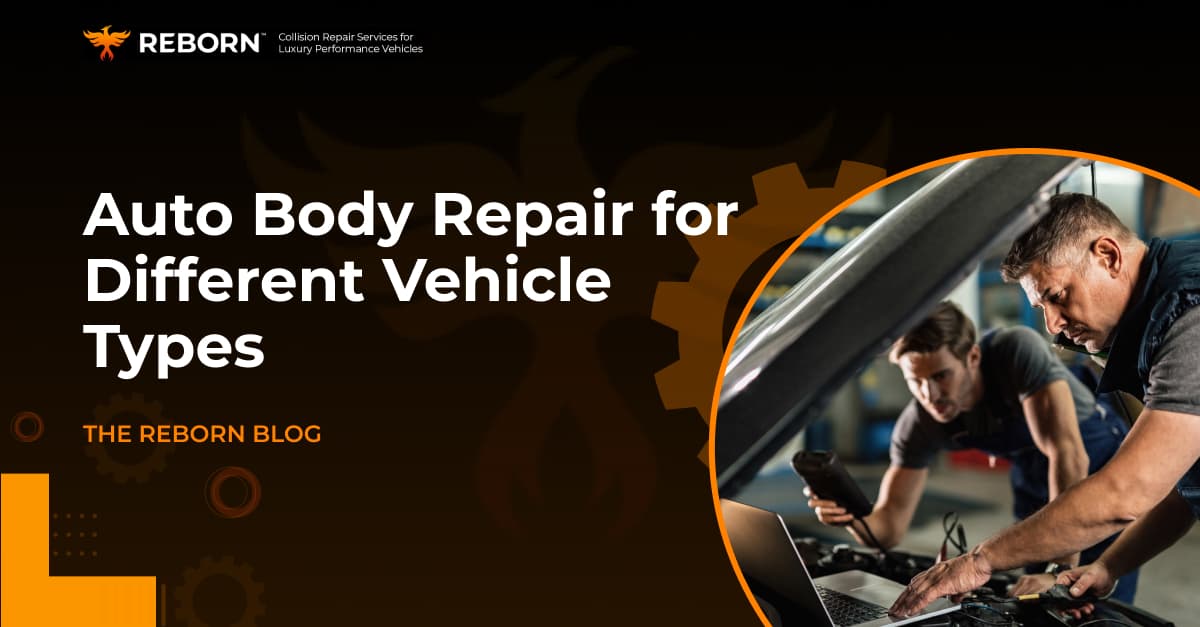This essay covers the fundamentals of auto body maintenance, from choosing the best repair provider to comprehending the high-tech world of paint matching and frame straightening. Discover a world of intricate maintenance procedures and how to identify any problems with your car.

Basics of Auto Body Repair
Auto body repair includes fastidious cycles to reestablish a vehicle after harm, zeroing in on the two feel and usefulness. This art requires a mix of customary procedures and imaginative techniques to return vehicles to their pre-harmed state or better.
Essential Processes:
- Assessment: The initial step is a careful assessment to recognize all harm, from shallow scratches to profound primary issues.
- Disassembly: Generally speaking, parts should be taken out to get to more profound harm and guarantee exhaustive fixes.
- Repair or Replace: Contingent upon the seriousness, parts may either be fixed or supplanted. Methods like mark expulsion, welding, and sanding are ordinarily utilized.
Materials Used:
- Metals: Different metals are molded and adjusted to reproduce body parts.
- Plastics and Composites: Utilized particularly in non-underlying parts like guards and trim.
- Paint: A critical viewpoint is the paint work, which should match the first tone and finish of the vehicle.

Tools and Technologies Used in Auto Body Repairs
Current auto body fixes depend on a mix of conventional devices and cutting edge innovations to accomplish top notch results. The business has seen huge headways in the devices utilized, improving both proficiency and adequacy.
Key Tools and Technologies:
- Hydraulic Lifts and Hoists: These are fundamental for getting to the underside of the vehicle and working with simpler fixes.
- Welding Equipment: Used to consolidate metal parts or fill holes brought about by consumption or harm.
- Pneumatic Tools: These apparatuses, fueled by packed air, incorporate wrenches, processors, and sanders, which are indispensable for dismantling and surface arrangement.
Advanced Technologies:
- Computerized Paint-Matching Systems: These guarantee that new paint impeccably matches the current vehicle tone.
- Laser Frame Diagnostic and Repair Systems: Lasers and sensors measure outline disfigurements with high accuracy, directing the reclamation cycle.
- 3D Printing: Progressively utilized for making new parts, particularly for custom or ended models.

Assessing the Cost of Auto Body Repairs
The degree of damage and the kind of vehicle involved can significantly impact the cost of car body repairs. Here, we look at the variables that affect repair prices and break down the average expenditures related to various damages.
Factors Influencing the Cost of Repairs
Add the extent of the damage, the vehicle’s make and model, the cost of the parts, and the local labor rates. High-performance automobiles are usually more expensive because they require specific components and knowledge to fix.
Average Costs for Common Repairs by Vehicle Type
While significant crash damage requiring frame alignment and airbag replacement might cost several thousand dollars, minor dents and scratches could only cost a few hundred. Get many quotes at different times to ensure you get a good deal.

How to Choose a Reliable Service
Selecting an excellent vehicle body repair provider is essential to guarantee long-lasting, high-quality repairs. This section provides the necessary standards for choosing a trustworthy car body shop. It emphasizes the value of legitimate customer feedback and industry certifications in helping you make an informed decision.
Criteria for Selecting a Reputable Auto Body Shop
Choosing a collision repair business with the necessary training and a strong reputation for reliability and quality ensures that your vehicle receives the best care possible. Several essential variables include the shop’s length of operation, the services it offers, and its access to the newest repair technologies.
Importance of Certifications and Customer Reviews
The company’s certifications from reputable trade organizations such as ASE (Automotive Service Excellence) and I-CAR (Inter-Industry Conference on Auto Collision Repair) demonstrate its dedication to quality. Customer evaluations also give insight into other car owners’ genuine experiences and reveal information about the company’s repairs and customer service quality.
Auto Body Shop Evaluation Checklist
Selecting the right auto body shop involves several considerations that can significantly influence the outcome of your car repairs.
- Location and Facility Inspection: Verify whether the store is easily accessible and has a tidy, orderly workspace.
- Technician Qualifications and Experience: Make sure the mechanics are qualified and have extensive expertise working on your kind of car.
- Customer Service Quality and Warranty Offers: To ensure the caliber of their work, look for a company that gives a warranty on repairs and provides exceptional customer service.

DIY vs. Professional
This section highlights situations where professional experience is essential and contrasts the benefits and drawbacks of DIY vs professional vehicle body repair.
Comparing the Pros and Cons of DIY and Professional Repairs
DIY repairs might be more affordable than professional services for tiny dents or scrapes. However, they lack the accuracy and assurance of expert repairs. Expert car body shops can perform intricate repairs beyond minor damage since they have the equipment and knowledge.
Situations Where Professional Repair is Non-Negotiable
For severe structural damage, such as frame misalignment or airbag deployment, professional assistance is necessary. Only skilled mechanics should do these repairs since they are vital to the vehicle’s safety and structural integrity.
Table: DIY vs. Professional
| Repair Scenario | DIY | Professional |
| Minor scratches or chips in the paint | Yes (with scratch removal compound) | Yes (for a flawless finish) |
| Small dents (ping-pong ball size or less) | Maybe (with PDR kits) | Yes (for guaranteed results and to avoid further damage) |
| Deep scratches or gouges in the paint | No | Yes (requires repainting and potentially body filler) |
| Broken or cracked windshields | No | Yes (improper installation can compromise safety) |
| Extensive collision damage | No | Yes (ensures proper structural repair and safety features are restored) |

The Impact of Auto Body Repair on Vehicle Lifespan
In addition to repairing the current damage, good repairs may prolong the life of your car by halting additional degradation.
How Effective Repairs Can Increase the Life of a Vehicle
Restoring the vehicle’s structural integrity and esthetic attractiveness with high-quality repairs increases its longevity and performance.
The Relationship Between Regular Maintenance and Vehicle Performance
Routine maintenance and timely repairs will help your vehicle run more smoothly and efficiently, preventing minor issues from escalating into larger, more costly ones.

Auto Body Repair in Vehicle Safety
A car’s safety is significantly impacted by the caliber of auto maintenance. This section addresses how maintaining your car’s safety features and general functioning might improve it.
How Repairs Impact Vehicle Safety Features
It is imperative to return a car to its original safety criteria, mainly when fixing structural issues and safety features like airbags.
Safety Considerations During the Auto Body Repair Process
Technicians must follow strict safety guidelines to guarantee that any repairs preserve the vehicle’s integrated safety features. This entails using parts that are suggested and adhering to exact repair protocols.

How to Inspect Your Vehicle for Potential Damages
Frequent inspections can help you spot damage early on and take care of it to avoid more involved and expensive repairs later. This section offers a comprehensive how-to guide for inspecting your car for overt and covert damage indicators.
Step-by-step Guide to Assessing Your Vehicle Signs of Damage
- Exterior Check: Examine your car from all angles to check for dings, dents, and paint anomalies.
- Under the Hood: Look for any unusual wear or misalignment in engine parts, which might point to internal problems.
- Interior Review: Examine the inside for any indications of impact-related damage to the seats, dashboard, or interior fixtures.
Key Indicators of Hidden Damage
- Alignment Issues: Damage to the suspension may be indicated by steering difficulties or a propensity for the car to pull to one side.
- Unusual Noises: When operating, noises coming from the engine bay or undercarriage may indicate underlying issues.
- Fluid Leaks: Any unusual fluids beneath the vehicle might indicate internal damage.
Conclusion
Throughout our investigation into auto body repair, we have discovered the essential actions and factors required to preserve and repair the integrity of your car. The information you have acquired here, from the painstaking art of paint matching to the precise skill of frame straightening, will enhance your ability to address or avoid future car body concerns.
Check out the Marketing Planet blog for more information and professional guidance. Post questions or share your experiences in the comments to interact with our community.
FAQ
Major bodily repairs: what are they?
Paintless dent repair, body filler application, glass and window repair, collision repair, bumper replacement, frame alignment, and auto detailing are significant body repairs.
Which kinds of automobile fillers are there?
There are three primary categories of car fillers: premium, medium, and regular quality. Each is made of polyester resin and hardener and may be used for many repairs.
Which fixes are the most typical?
Water damage, termite damage, HVAC, plumbing, and electrical repairs are commonplace in homes. Preventive actions like cleaning the gutters can reduce costs.








